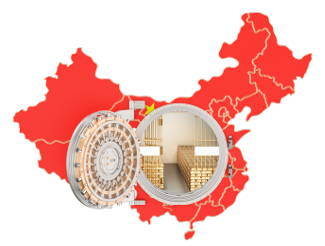Another month, another report of more Chinese gold purchases. For the fourth consecutive month the Chinese government has added to its official gold reserves, with another 360,000 ounces, or 11 tonnes, of gold purchased in March. That brings the country’s official gold reserves up to 60.62 million ounces.
The fact that China continues to purchase gold is an important indicator of its views of the future state of the world economy. With 2018 nearly breaking a record with over 651 tonnes of gold purchases by central banks, all indications are that 2019 will continue that buying streak as central banks look to strengthen their balance sheets and add to their reserves in advance of a global recession.
China in particular wants to strengthen its reserves in the face of headwinds faced as a result of the ongoing trade dispute with the United States. Tariffs on Chinese goods have already begun to affect Chinese businesses, with the prospects of a Chinese recession growing more and more likely every day. Given the vast amount of both government and private debt within China, anything the central bank can do to try to engineer a soft landing is highly desirable.
China also wants to place itself in a position of strength once the dollar inevitably is dethroned from its status as the world’s reserve currency. With rumblings of discontent emanating from the Middle East, and the possibility of world oil markets beginning to accept non-dollar currencies for payment, China wants to make sure that it is positioned to take advantage of the dollar’s fall from grace. If the country is able to build up enough gold reserves to even partially back the yuan with gold, that could position the yuan to be a prime competitor to become the world’s next reserve currency.
Gold investors should view these purchases as yet another indicator that the future of money is in gold. Nearly half a century of floating fiat currencies and the instability they have engendered have led not just private investors to flock to the protective status of gold, but central banks and governments as well. The luster of fiat currencies has worn off, while the glitter of gold shines brightly once again.
This article was originally posted on Goldco.




